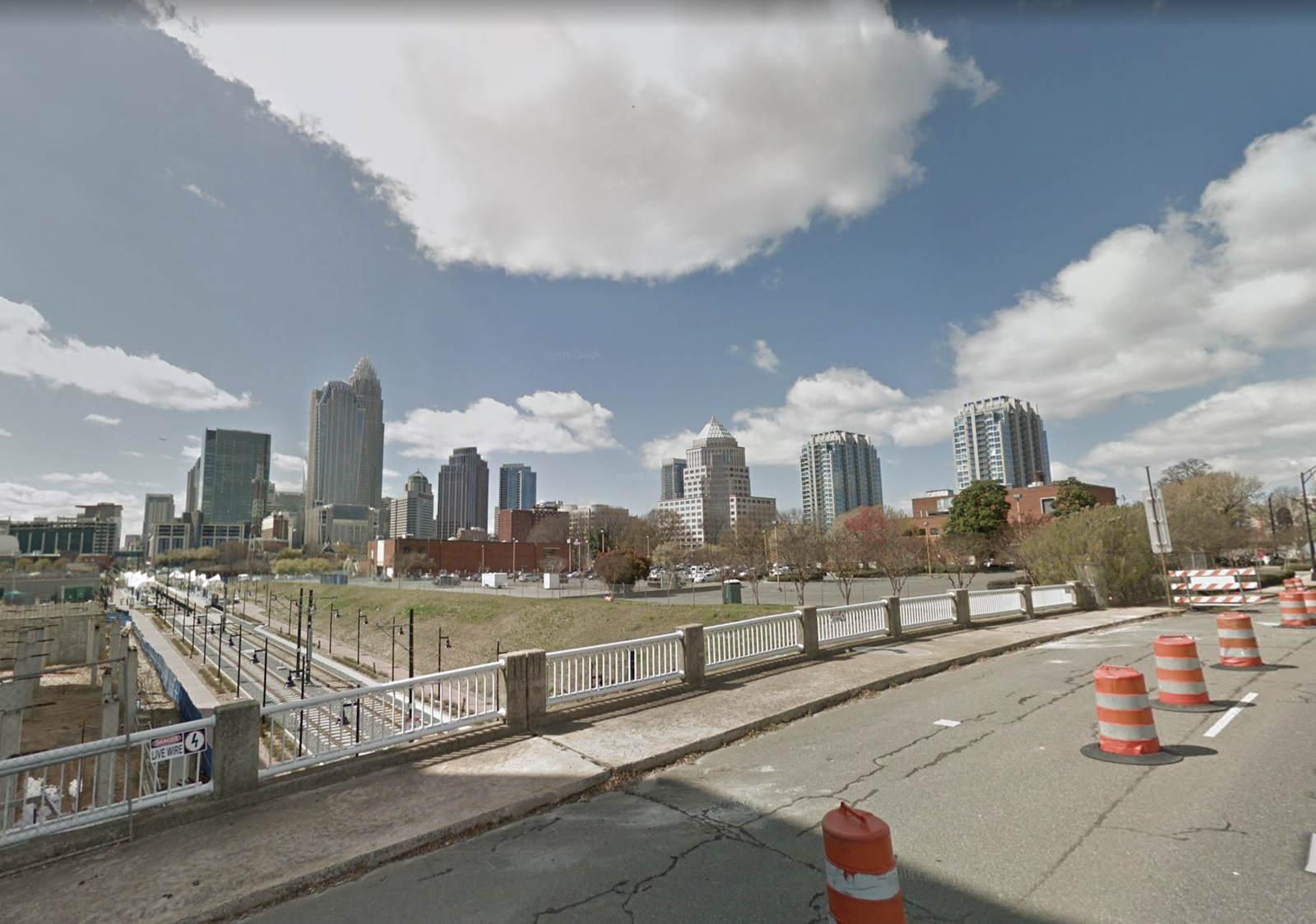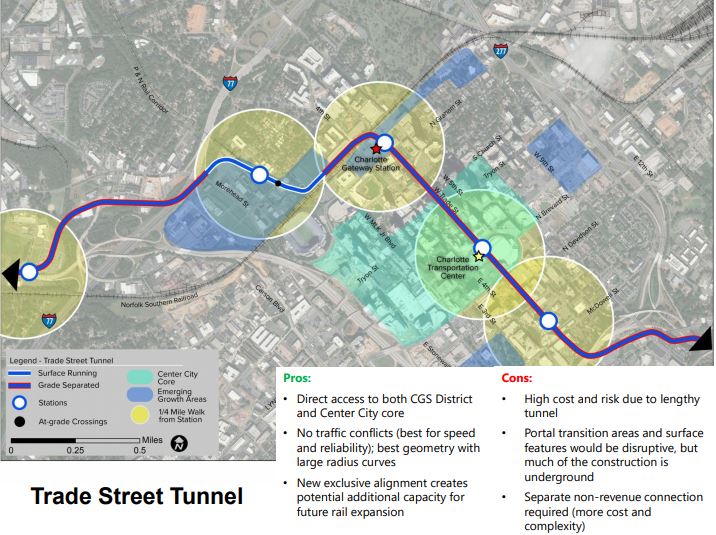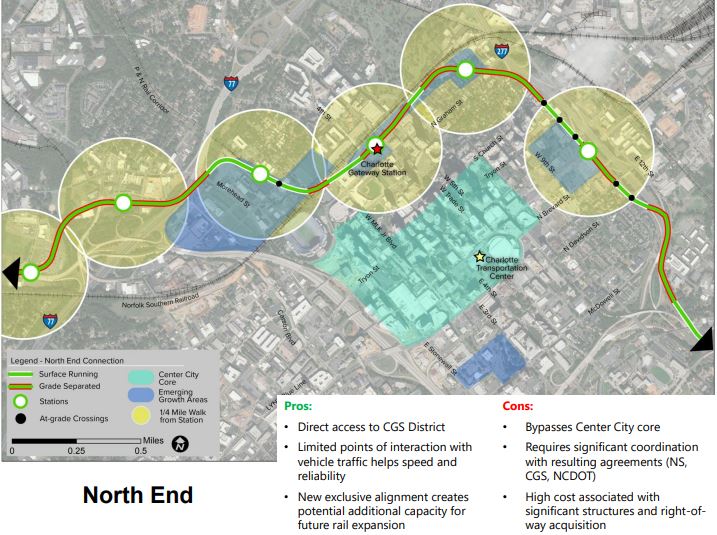
Today, Charlotte’s transit agency, CATS, will vote on the proposed alignment for its new Silver Line Light Rail project. The Silver Line is the city’s second light rail line, and will run from east to west through the region.
The board that governs CATS will choose between two options for light rail to traverse Uptown, Charlotte’s jobs and employment center. In one scenario, rail would run in a tunnel through the center of Uptown, with a station at the Charlotte Transportation Center, the city’s local bus hub. This is a good alignment that serves where Charlotte residents live and work.

Proposed alignment for a Trade St Tunnel
But somewhat bafflingly, planners at CATS are instead recommending a much worse alignment that would run along a freeway, skirting the city core rather than connecting people to it.
This alignment would dramatically shrink the number of destinations within walking distance of stations, limit access to the 70,000 jobs in Uptown, and generate significantly less ridership:

Proposed alignment along I-277
In a presentation to Charlotte transportation advocates, CATS staff justified their support for the freeway alignment by promoting the real estate development potential around the new stations. They estimate that this alignment would be less expensive, would involve less risk, and would be able to be completed by 2030. This is short-term thinking that fails to consider what makes transit useful to people.

The proposed connection between the existing Blue and proposed Silver Line. Uptown in the Distance is a 15 minute walk away.
TransitCenter research has shown that the more easily people can walk to transit, the more likely they are to use it. Sound Transit’s massively successful expansion in Seattle, for example, has demonstrated that if you build light rail stations in the heart of dense neighborhoods that are easy to walk to, people will flock to the service. Conversely, situating transit along freeways is a recipe for low ridership, as evidenced by recent rail projects in Los Angeles and Denver.
Completing a project faster is an empty victory if no one rides it. Leaders in Charlotte should make the smart choice to invest in transit that connects residents in their region with the jobs and opportunity in Uptown.
 On the Brink: Will WMATA’s Progress Be Erased by 2024?
On the Brink: Will WMATA’s Progress Be Erased by 2024?
The experience of being a WMATA rider has substantially improved over the last 18 months, thanks to changes the agency has made like adding off-peak service and simplifying fares. Things are about to get even better with the launch of all-door boarding later this fall, overnight bus service on some lines starting in December, and an ambitious plan to redesign the Metrobus network. But all of this could go away by July 1, 2024.
Read More A Bus Agenda for New York City Mayor Eric Adams
A Bus Agenda for New York City Mayor Eric Adams
To create the “state-of-the-art bus transit system” of his campaign platform, Mayor Adams will have to both expand the quantity and improve the quality of bus lanes. We recommend these strategies to get it done.
Read More